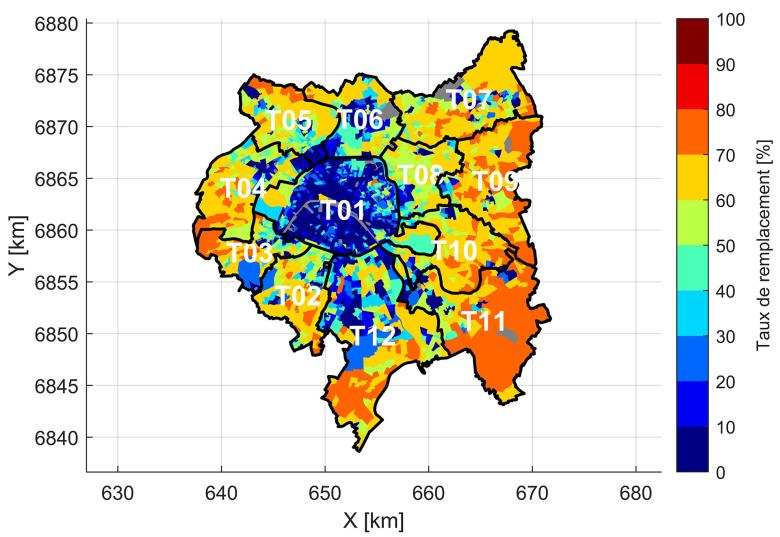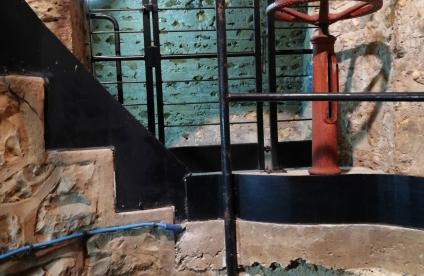
Contribution of near-surface geothermal energy as a replacement for gas, with priority given to existing heat networks with a 50m extension across all 2,861 IRIS grids in the Greater Paris Area (2012).
© BRGM
The need
The Greater Paris authorities wanted to find out more about the local potential of near-surface geothermal energy by looking beyond the maps of geothermal resources currently available for the Paris region. The first step was to update existing knowledge of shallow aquifers (Lutetian, Yprésian-Cuisian and Chalk). Geothermal resources were then cross-referenced with the land available for drilling in order to assess the amount of energy that could be exploited for heating, domestic hot water and cooling. Thermal needs were assessed by a research consultancy commissioned by the Greater Paris Area, based on all the cadastral plots – numbering over 500,000 – in the area. The results were aggregated and reported at different levels, for each of the 2,861 IRIS grids (entities based on INSEE data), 131 municipalities and12 Etablissements Publics Territoriaux (local administrative areas) covering the Greater Paris Area.
The results
For each of the three levels of reporting, the new maps showed the different levels of geothermal potential obtained by adding several successive constraints: first, geothermal resources and available land, second, the presence of central heating in buildings (in this case, a geothermal heat pump can quite easily replace a boiler room, without the need for works in living areas), and finally the presence of a heat network near the building (in this case, priority must be given to the connection with the heat network). Figures indicate that near-surface geothermal energy could cover 58% of the annual thermal energy consumption – estimated at 50.94 TWh – and contribute to decarbonising heat production by replacing around 25% of gas heating consumption, after giving priority to connections to existing heat networks.
Using the results
Currently available on the mapping page of the Greater Paris Area website, the maps produced will be used to facilitate the deployment of near-surface geothermal energy at local level.
The partners
- Greater Paris Area

This study shows the extraordinary potential of near-surface geothermal energy. We now need to apply the detailed mapping information to each municipality to develop projects where appropriate. The potential increases as we move away from the city centre, which is denser with more heating networks. Local authorities can request financial support from the Greater Paris Area, in addition to contributions from ADEME and the Regional Council.





